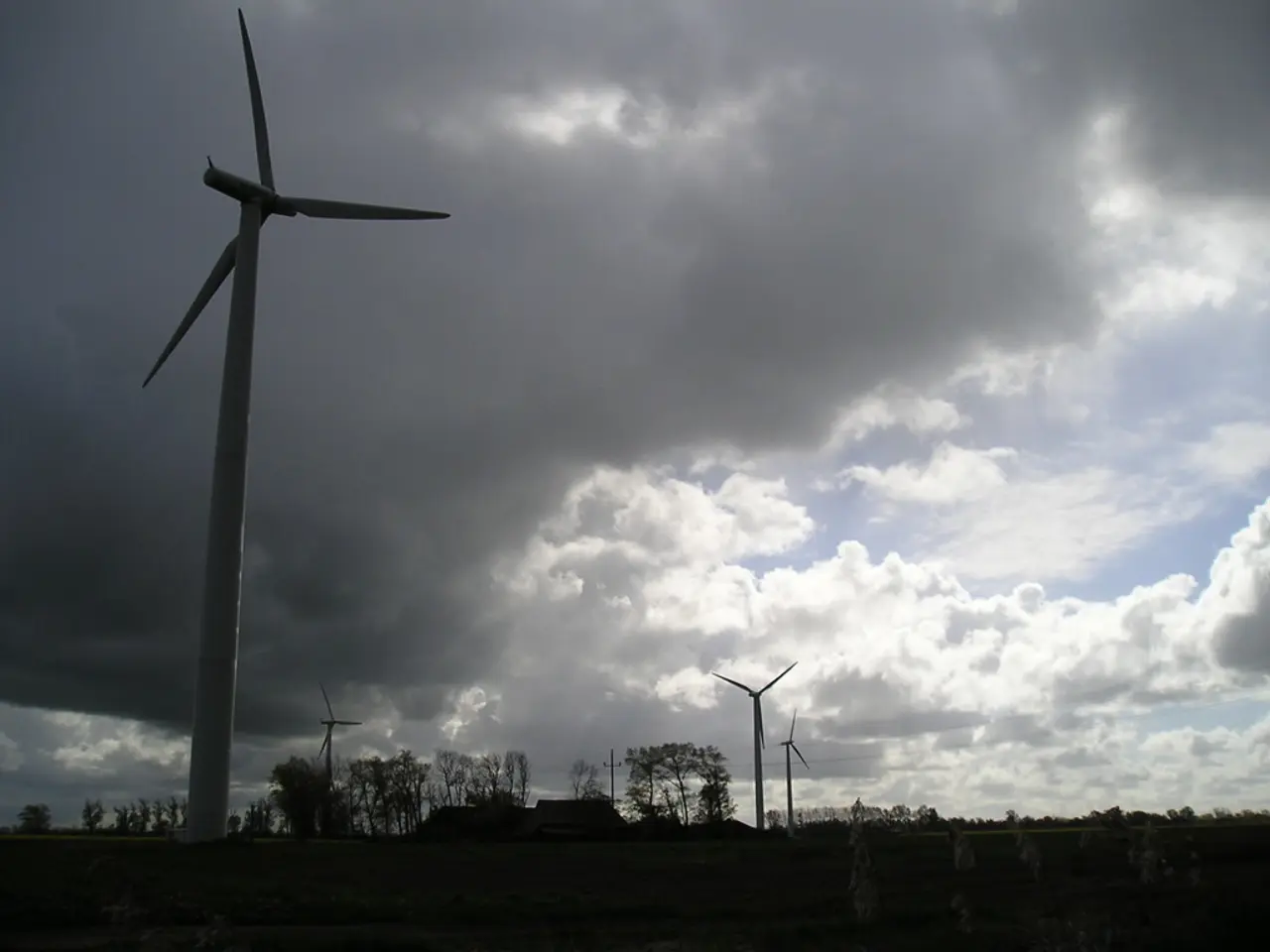Wind Farms Expand in Rhineland-Palatinate: 19 Turbines Now Functioning - Wind turbines now spinning in Rhineland-Palatinate: 19 in total
In the ongoing expansion of wind power across Germany, Rhineland-Palatinate (Rheinland-Pfalz) is contributing to the landscape, albeit at a more modest pace compared to leading wind-producing states such as Lower Saxony and Schleswig-Holstein.
As of 2025, Germany's overall installed wind power capacity has more than doubled since 2011, reaching approximately 72.7 GW. The country's aggressive expansion includes both onshore and offshore wind energy, with federal targets of 30 GW offshore capacity by 2030 and 70 GW by 2045.
Despite the lack of specific large-scale projects in Rhineland-Palatinate, the state is not left behind. The federal government's approach includes streamlining approvals and supporting regional citizen involvement and energy cooperatives, factors that are likely influencing growth trends in Rhineland-Palatinate as well.
In the first half of 2025, Rhineland-Palatinate accounted for approximately five percent of the total increase in wind power capacity across Germany. The state operationalised 19 new wind turbine facilities with a combined capacity of around 110 megawatts, contributing to Germany's renewable energy goals. The expansion of wind power usage in Rhineland-Palatinate increased by 125% compared to the previous year, marking the best half-year value for wind turbine facility operation since 2017.
As of the end of June 2025, there were 1,791 wind power facilities with a combined capacity of 4,340 megawatts in Rhineland-Palatinate. This marks a continuation of the record-breaking wind power capacity growth in the state. The operation of these new wind turbine facilities in Mainz, Rhineland-Palatinate, contributes significantly to this growth.
Compared to leading German states for wind power like Lower Saxony, Schleswig-Holstein, and Brandenburg, Rhineland-Palatinate's wind power capacity is generally less dominant given its topography and land use. Leading states actively submit large-scale projects and repowering schemes totaling hundreds of megawatts, whereas Rhineland-Palatinate traditionally has had more modest wind power development.
In conclusion, while Rhineland-Palatinate continues to develop wind power, growth is more modest compared to the largest wind-producing federal states. This aligns with the general trend of Germany’s ongoing energy transition efforts dominated by coastal and northern federal states with favorable wind conditions.
- The community policy in Rhineland-Palatinate, focused on streamlining approvals and supporting regional citizen involvement, is playing a significant role in the growth of the wind power sector in the state.
- In the realm of renewable-energy, Rhineland-Palatinate's employment policy, which encourages the operation of energy cooperatives, contributes to the expansion of wind power usage in the state.
- The finance industry and environmental-science sectors may find promising opportunities in Rhinland-Palatinate's renewable-energy industry, particularly in the production of wind power, as the state continues to invest in this sector despite its modest pace compared to leading states.




